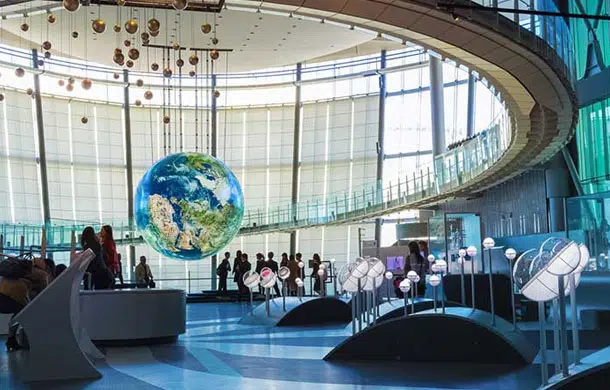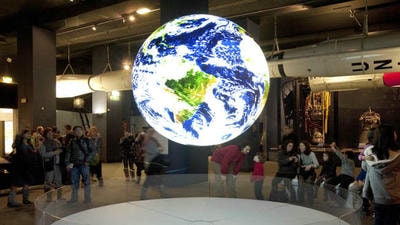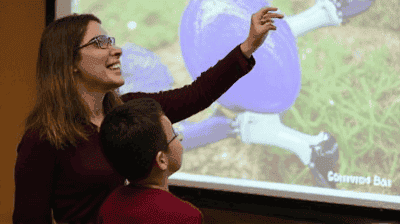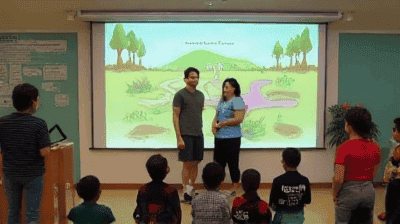
Museums and science centers serve as vital cultural institutions that engage millions of visitors each year. They provide a space for exploration, discovery, and learning, often focusing on the sciences, the arts, and history. In recent years, many of these institutions have recognized their potential as agents of change in addressing environmental challenges through education.
Environmental education is a process that helps individuals—especially young people—develop an understanding of environmental issues, the interconnections between natural and human systems, and the skills necessary for responsible citizenship. It emphasizes critical thinking, problem-solving, and the importance of taking informed actions to promote sustainability.
Awareness and Understanding: Environmental education raises awareness about crucial issues such as climate change, biodiversity loss, and pollution, helping individuals understand their role in these challenges.
Empowerment: By equipping individuals with knowledge and skills, environmental education empowers them to advocate for sustainable practices and environmental justice.
Behavioral Change: Informing people about the consequences of their actions can lead to shifts in behavior, encouraging sustainable practices at an individual and community level.
Community Engagement: Engaging the public in discussions about environmental issues fosters a sense of responsibility and stewardship for the planet.

Museums and science centers offer interactive and immersive experiences that can enhance understanding and retention of complex environmental concepts. Through hands-on exhibits, demonstrations, and educational programs, these institutions provide engaging learning environments that appeal to diverse audiences.
Experiential Learning: Visitors engage with exhibits that stimulate curiosity and encourage exploration. For example, interactive displays on ecosystems can help visitors understand the balance of flora and fauna within their local environment.
Collaborative Learning: Many exhibits promote discussion and collaboration, allowing visitors to share experiences and insights. This collaborative environment enhances communication skills and fosters a sense of community.
Museums and science centers are often regarded as credible sources of information. They employ experts in various fields, including environmental science, ecology, and sustainability. This expertise lends authority to the educational content presented in their exhibits and programs.
Research-Based Information: Educational materials are typically rooted in scientific research, ensuring that visitors receive accurate and up-to-date information on environmental issues.
Hosting Events and Lectures: Through lectures, panel discussions, and workshops, museums and science centers can facilitate conversations on pressing environmental topics, featuring guest speakers who are leading experts in their fields.
Museums and science centers offer diverse programming that caters to audiences of all ages and backgrounds. While school groups are a common audience, these institutions also provide opportunities for families, adults, and underserved communities to engage with environmental education.
School Programs: Many museums offer dedicated programs for teachers and students, providing resources and curricula that align with educational standards while highlighting environmental topics. These programs often include field trips, workshops, and hands-on activations.
Community Programs: Science centers often engage in outreach efforts to reach underprivileged communities, providing access to environmental education that might otherwise be unavailable.
Museums and science centers have the ability to contextualize environmental education within both local and global frameworks. By highlighting local ecosystems and environmental challenges alongside global issues such as climate change and resource depletion, these institutions help visitors see the interconnectedness of environmental systems.
Local Biodiversity Exhibits: Many museums feature exhibits that showcase local ecosystems, plants, and animal species, allowing visitors to learn about their immediate environment and inspire them to protect it.
Global Challenge Exhibits: Science centers often host traveling exhibitions that address global issues, such as climate change, pollution, and water scarcity, fostering awareness about the broader challenges facing our planet.
Interactive Displays: Interactive displays engage visitors with hands-on activities, allowing them to experiment with concepts like the water cycle, food webs, and carbon footprints. For instance, interactive simulations that show the impact of pollution on local waterways can leave a lasting impression.
Virtual Reality Experiences: Some science centers are increasingly using virtual reality to create immersive experiences that transport visitors to unique ecosystems, such as the Amazon rainforest or coral reefs, helping them understand the fragility of these environments.
Museums and science centers often engage the public in citizen science initiatives, encouraging individuals to participate in real scientific research while contributing to environmental monitoring efforts.
Data Collection: Visitors can participate in projects that involve data collection—such as tracking local bird populations or monitoring water quality. This hands-on involvement enhances understanding of scientific methods while contributing to meaningful research.
Public Participation: Citizen science projects often invite individuals to contribute to global datasets, enhancing community engagement and fostering a sense of ownership over environmental issues.
Curators at museums and science centers are increasingly focusing on thematic exhibits centered around environmental education.
Exhibits on Climate Change: Interactive exhibits focusing on the science and impacts of climate change can provide visitors with insights into this global challenge and potential solutions.
Conservation Campaigns: Programs that promote conservation efforts, such as protecting endangered species or preserving local habitats, can help raise awareness and encourage community involvement.

The California Academy of Sciences in San Francisco is a prime example of how a science center can promote environmental education through a variety of engaging and interactive programs. The Academy houses an aquarium, a natural history museum, and a planetarium, all focused on teaching visitors about the interconnectedness of Earth’s systems.
Programs:
The Field Museum in Chicago offers a range of exhibitions that showcase the diversity of life on Earth and the importance of conservation efforts. The museum hosts rotating exhibits that address topics such as climate change, habitat loss, and species extinction.
Programs:
The Exploratorium in San Francisco is renowned for its hands-on science exhibits and commitment to innovative education. The museum places a strong emphasis on environmental education through interactive exhibits and workshops designed to engage visitors in meaningful learning.
Programs:
The prevalence of misinformation surrounding environmental issues can hinder effective education. Museums and science centers can serve as authoritative sources and provide accurate information to combat false narratives.
Ensuring that environmental education is accessible to all communities is crucial. Museums and science centers should strive to remove barriers—such as cost, transportation, and language barriers—that might prevent individuals from participating in educational programs.
Many museums and science centers operate with limited budgets, making it essential to secure funding for environmental education initiatives. Establishing partnerships with local organizations, government agencies, and private donors can help sustain and expand programming.

To effectively engage diverse audiences, museums and science centers should consider tailored programming that reflects the interests and needs of specific communities.
Culturally Relevant Exhibits: Exhibits and programs should acknowledge and celebrate the diverse cultural backgrounds of communities, incorporating traditional ecological knowledge and practices to create meaningful connections.
Multilingual Resources: Providing multilingual resources and programming can ensure that non-native speakers have access to educational materials, fostering inclusive and equitable learning environments.
Building partnerships with local organizations, schools, and environmental groups can enhance outreach efforts and amplify the impact of educational programs.
Collaborative Projects: Working with community organizations on collaborative projects can strengthen ties with local populations and create more effective educational initiatives.
Local Experts: Inviting local experts to lead programs can enrich the educational experience and allow participants to learn from individuals with firsthand knowledge of regional environmental issues.
As technology continues to evolve, museums and science centers must embrace innovative approaches to education. Adopting new technologies, such as augmented reality, virtual reality, and interactive digital platforms, can enhance visitor experiences and promote deeper engagement with complex environmental concepts.
Museums and science centers should not only educate the public about environmental issues but also model sustainable practices in their operations. By committing to sustainable operational practices, such as reducing waste, conserving energy, and sourcing materials responsibly, these institutions can inspire visitors to adopt similar practices in their own lives.
Continual assessment of educational programs allows museums and science centers to refine their approaches based on visitor feedback and evolving environmental challenges. By staying attuned to the needs and interests of audiences, these institutions can ensure their environmental education efforts remain relevant and impactful.
Museums and science centers play a pivotal role in advancing environmental education through interactive, credible, and accessible programming. By fostering awareness, empowering individuals, and promoting behavioral change, these institutions can contribute significantly to a sustainable future.
As we confront pressing environmental challenges, it is vital that museums and science centers continue to evolve and innovate in their approaches to education. Through collaboration, community engagement, and a commitment to sustainability, these institutions can equip visitors with the knowledge and skills necessary to advocate for and implement positive change in their communities and beyond.